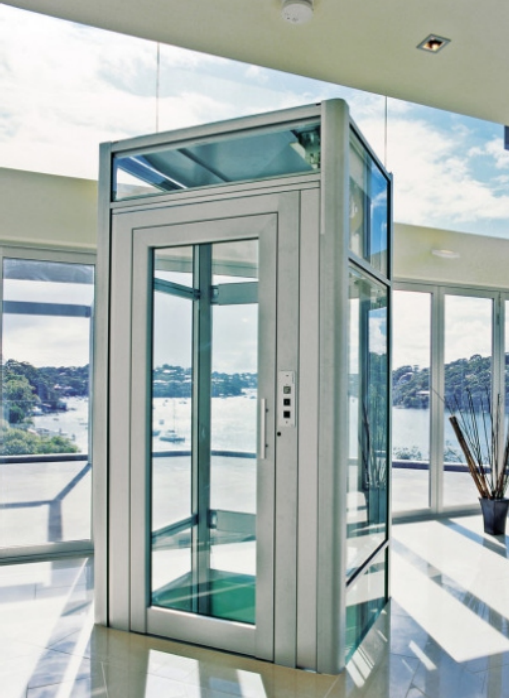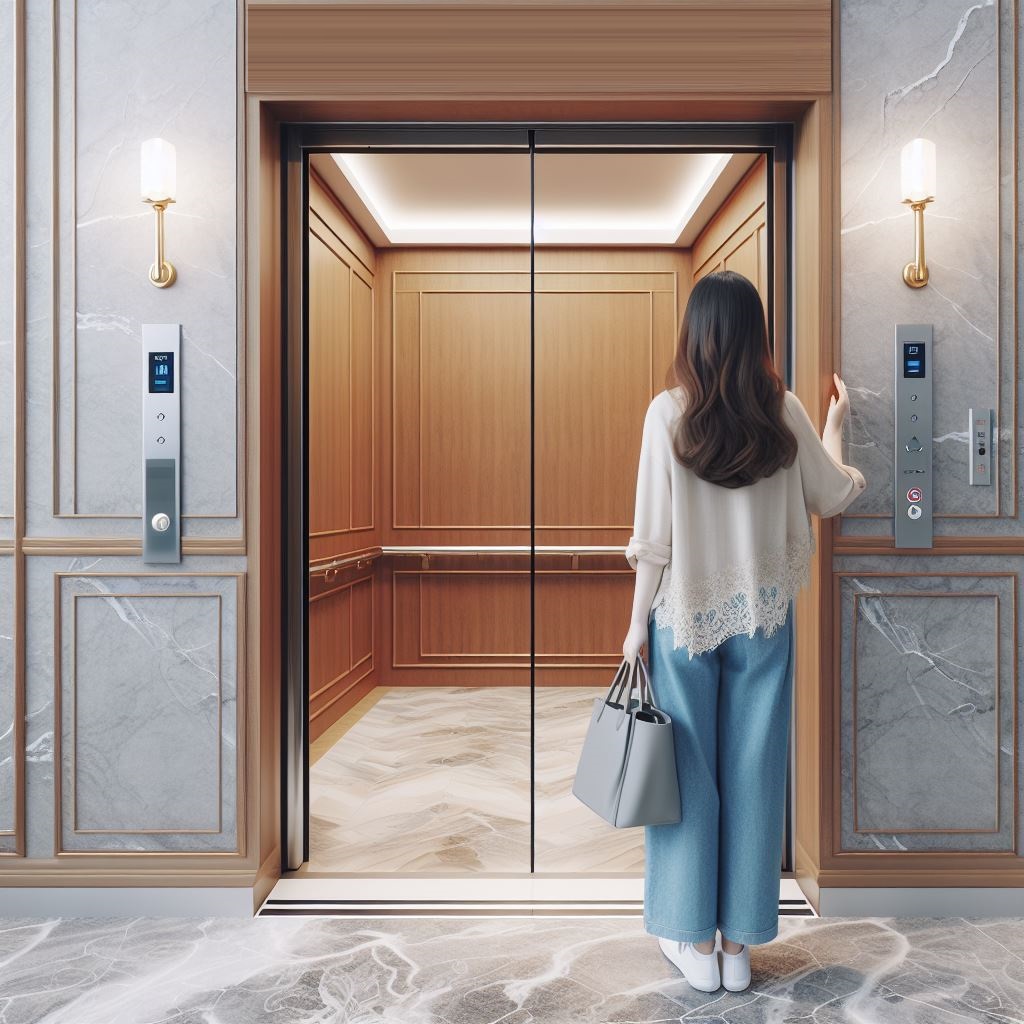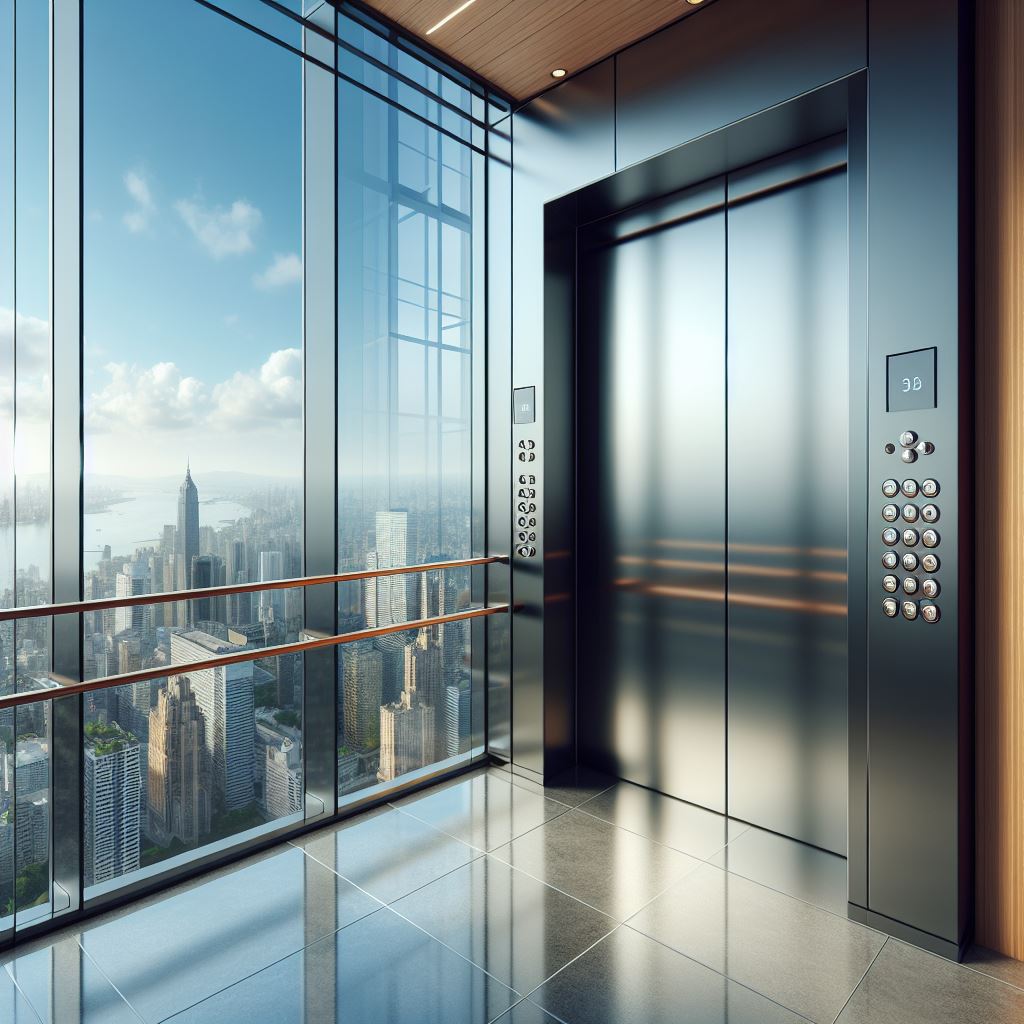Hassle Free Travel with Our Traction Elevators in India. More Suitable for Home, Apartment and High Rise Buildings. Best Vertical Transportation in the World with Heavy Load. Most Suggested Lift Type in the Universe.
Traction home elevators are a popular type of elevator system that use counterweights and ropes to move the elevator cab up and down.

Operating Principle of Traction Elevators:

Traction elevators operate on the principle of a motor-driven system that utilizes ropes or belts connected to the elevator car and counterweight. The motor, often located at the top of the elevator shaft, drives the sheave or pulley system.
Ropes & Counter-weight
The top of the elevator car attaches the ropes, which then loop around a sheave. On the opposite side of the sheave, a counterweight connects to balance the load of the elevator car. This counterweight helps reduce the overall energy consumption as it offsets the weight of the car and its occupants.
Types of Traction Elevators Systems
- Geared Traction Systems: These systems use a gearbox to control the movement of the sheave, providing more control over the elevator’s speed. Mid-rise buildings often employ geared systems.
- Gearless Traction Systems: In contrast, gearless traction systems eliminate the need for a gearbox, resulting in a more compact and efficient design. High-rise buildings commonly use these systems, which provide smoother rides.

Considerations For Traction Elevator
- Building Height: Traction elevators suit buildings with multiple floors, particularly those surpassing a certain height where hydraulic systems may prove less efficient.
- Maintenance: Ensure smooth traction elevator functioning through regular maintenance, promptly addressing any issues with qualified technicians.
Advantages of Traction Elevators
Commonly used in buildings to move people and goods between different floors. It have many advantage as follows as:

Smooth and Comfortable Ride
Traction elevators provide a smooth and comfortable ride due to their motorized drive system, resulting in reduced vibrations and noise levels.

Energy Efficiency
Traction lifts generally outperform hydraulic elevators in energy efficiency, utilizing counterweights to offset the cab’s weight. Additionally, they can enhance energy efficiency further by employing regenerative drives.

Faster Speeds
Traction elevators can achieve faster speeds, making them suitable for high-rise buildings where quick vertical transportation is necessary.

Compact Design
Traction lifts typically require less space compared to hydraulic elevators since they do not need a separate machine room.
Cost Consideration Traction Elevators
The cost of a traction elevator can vary based on several factors, including:
- Capacity and Size: Larger capacity elevators with greater weight limits may be more expensive.
- Traction Lift Speed: Higher speed elevators can come at a higher cost due to the required motor power and system complexity.
- Customization and Finishes: Upgrades and customization options, such as premium finishes and interior designs, can increase the overall cost.
- Installation and Maintenance: Consider installation and ongoing maintenance costs, including expenses for permits, inspections, and service contracts.
Traction Elevators Specifications
- Capacity: Traction elevators can have different weight capacities to accommodate varying needs, ranging from a few hundred kilograms to several thousand kilograms.
- Speed: Traction lift can achieve faster speeds compared to other elevator types, with speeds ranging from 1 meter per second to over 4 meters per second.
- Control System: Traction lift often use computerized control systems to ensure smooth and efficient operation.
- Drive System: Traction lifts use an electric motor and a system of ropes and pulleys to move the elevator cab.

Safety First

Capture attention with a strong opening statement emphasizing the utmost importance of safety. Introduce the company’s dedication to ensuring the safety of employees, clients, and passengers.
Ensuring Passenger Safety
- Highlight advanced features, such as newly designed brakes and battery-operated auto rescue systems, that contribute to passenger safety.
- Explain how these features work and their specific benefits when traction lift Installation.
Protecting Employees and Clients
- Describe the rigorous safety protocols implemented in factories and job sites.
- Discuss the Shaft Climber Mechanism, explaining its purpose and how it aids in protecting employees and clients.
- Share any statistics or success stories related to the implementation of these safety protocols.
FAQ Questions
How Fast Can Traction Elevators Go?
Traction elevators can travel at much higher speeds than hydraulic elevators. Most traction elevators can travel at a speed of about 500 feet per minute, although some can even travel as fast as 1,200 feet per minute. This makes them ideal for high-rise buildings that require fast and efficient transportation of large numbers of people.
How Much Does It Cost to Install and Maintain a Traction Elevator?
The cost of installing a traction elevator can vary widely depending on a number of factors, including the size of the building, the type of elevator desired, and the location of the elevator. On average, the cost of installing a standard traction elevator in a new building is anywhere from ₹10 lakhs to ₹25 lakhs.
The cost of maintaining a traction elevator can also vary widely depending on the type of elevator, the age of the equipment, and the frequency of required maintenance. However, as a general rule of thumb, you can expect to pay anywhere from ₹20,000 to ₹25,000 per year for elevator maintenance.
What Safety Features are Required for Traction Lifts?
Traction elevators must have safety features like emergency brakes, limit switches to prevent exceeding speed limits, sensors to stop for obstacles, and safety circuits for power issues. Modern elevators also include communication systems for passengers to call for help in emergencies.
